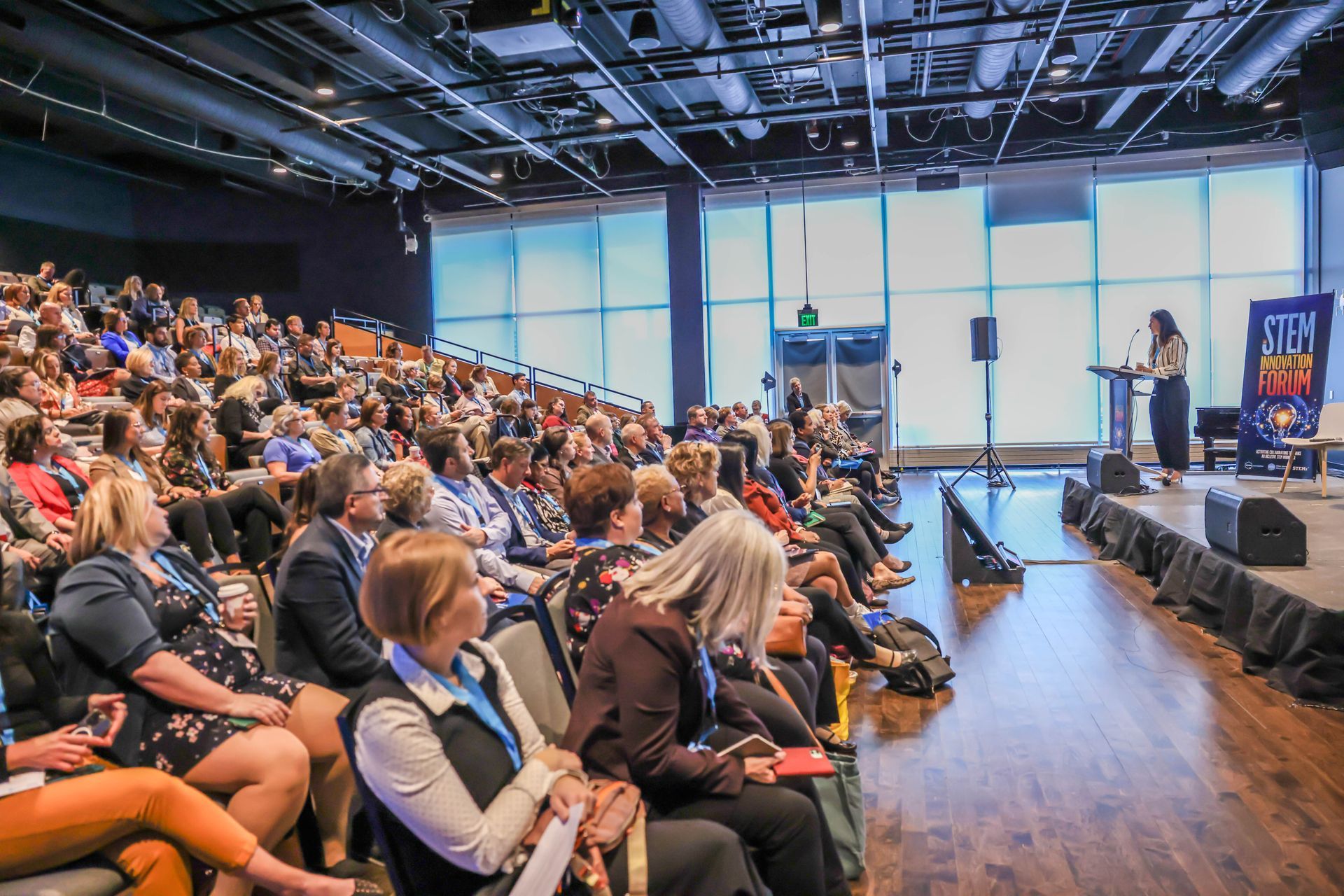The attraction of magnet schools
What is the “attraction” of magnet STEM schools, and how are they different, if at all, from other STEM schools? To find out, we asked Becky Ashe, founding principal of L&N STEM Academy in Knoxville, Tennessee, about her magnet high school and magnet schools in general. She also shared information about the Magnet Schools of America annual conference:
Q: Your school, L&N STEM Academy, is a magnet high school. What, in general, is a magnet school, and how does a magnet STEM school differ from other STEM schools?
We chat with Principal Becky Ashe about magnet schools and effective conferences
A: A magnet school focuses on a theme that permeates the building’s philosophies and guides instruction — and, most important, “attracts” students to attend who might not otherwise be eligible. Several types of magnet schools, or magnet programs, exist, from “whole school” (like ours) where the entire population participates in activities that promote the theme (a popular saying is: Magnet schools should “scream their theme” as soon as people enter the doors); to “school-within-a-school” models where only a portion of the student body and faculty are active in the theme’s activities.
The overarching characteristic that makes a school a “magnet” is that it actively recruits and enrolls students targeted by the theme. A more detailed explanation is available at the Magnet Schools of America (MSA) website. We are a “whole school” magnet, but also a standalone (we have no zone where a student can live and automatically be enrolled) with open lottery enrollment. Students have no criteria to meet to be accepted; they simply must have their number drawn in a random, computerized lottery.
With respect to how a magnet STEM differs from other STEM schools, many great STEM schools nationwide are engaged in activities similar to magnets. The difference is, they might be closed to transfers, perhaps because of space or staffing restrictions. If you look at the Pillars of Magnet Schools on the MSA website , you will see overlap with the most pervasive models of effective STEM schools (student voice, interdisciplinary teaching, community involvement, etc.).
Q: Does a magnet STEM school convey the STEM curriculum and philosophy in a unique way? Do you face unique challenges as a magnet school?
A: Being a magnet STEM school doesn’t change how we implement STEM curriculum and philosophy. We still strive to align ourselves with best practices in STEM. We utilize resources obtained through relationships with STEMx and the Battelle network, our state STEM network (the Tennessee STEM Innovation Network, or TSIN) and emerging rubrics from sources such as the University of Chicago Outlier study
and AdvancEd’s new STEM standards.
The aspect that changes for us as a magnet school is that we always have an eye on recruiting students. “Customer service” is a priority because our staffing and resources are based on student enrollment numbers. We do not have a core of zoned students — we must build each entering class from ground zero, which adds pressure to make people aware of what we are doing year round.
Q: Switching gears a bit, when and where did you attend the Magnet Schools of America annual conference?
A: I’ve attended the past two years’ national conventions, in 2015 in Raleigh, N.C., and in May 2016 in Miami, Fla.
Q: What aspects did you find most useful?
A: The informational session about the rollout of new certification available to magnet schools by the MSA, because we are excited to be part of the first cohort of schools nationwide to go through the process to be nationally certified as a magnet school.
Q: If you could change/add to the conference, what would you do?
A: I would take lessons from the Connect for Success
conference and be interdisciplinary by having sessions presented by people doing tangential research, such as the lunch and learn from 2015 where we heard from experts in business about recruiting talent and developing leadership. A conference needs to inspire us to think differently, not just validate what we are doing.
I would also shorten school-program presentations, or group them onto panels. Attendees are there to gather ideas; it is unlikely many people could take any program and implement it as presented because magnet schools tend to be community-influenced. We need to hear enough to make us curious, but not the details, and be provided contact info to follow up. School programs could be presented as roundtables in a space and rotate every 15 minutes, or do a panel presentation that is followed by a 60-minute social networking time. The best learning comes from people having dialogue, not just PowerPoint presentations.
Meals are provided, but they could be enhanced by suggesting questions or problems for discussion during the meal.
An increase in expectations for presentations is needed. The pre-conference meetings that support STEM presenters for Battelle Education at Connect for Success could be copied to improve the quality of presentations to ensure engaging activities and best practices used by presenters. The organizing committee could also be more selective in its acceptance of presenters and flexible in its scheduling. Not everyone needs an hour to describe an afterschool program.
Overall, the conference could use more clearly defined strands — along themes or grade levels, or possibly even magnet models — that are enhanced by featured speakers selected to inspire everyone to think differently about our work.
Q: Do you think other STEM educators, either in magnet schools or not, would benefit from attending this event?
A: Not as it is run now. I have experienced better STEM development at the other conferences I listed above.
Q: Is there anything else you would like to tell readers about the conference, or what you learned there?
A: The school visits are a nice feature of the conference. It is always beneficial to see other schools in action.
Q: Finally, to satisfy readers’ curiosity, what does “L&N” stand for in your school’s name?
A: Our school is located in a 110-year-old train station that served the Louisville & Nashville rail line. “L&N” is the name of the railroad company. If you’re ever in Knoxville, please stop in and see for yourself!
Curious about L&N’s name? The school’s built inside a historic Knoxville train station.






